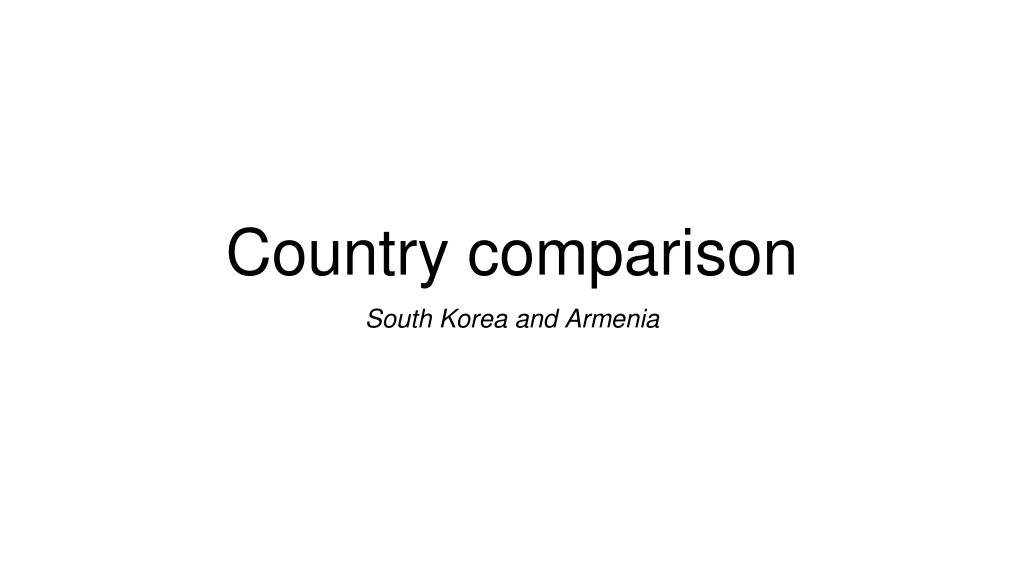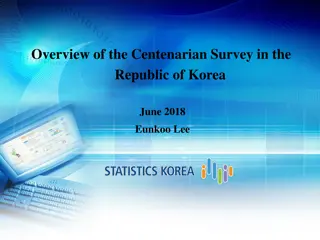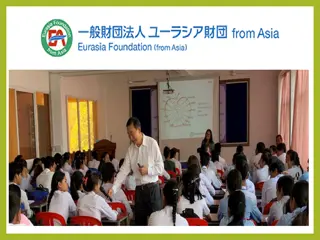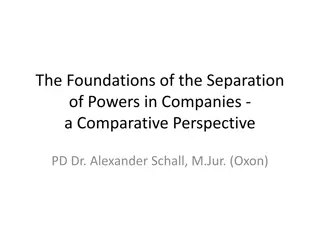
Cultural Contrasts: South Korea vs Armenia
Explore the distinct family dynamics and cultural heritage of South Korea and Armenia. Discover how traditions and values shape familial relationships in these two unique societies, reflecting centuries of history and evolution. A fascinating look at the interplay between modernity and tradition in contrasting cultural settings.
Download Presentation

Please find below an Image/Link to download the presentation.
The content on the website is provided AS IS for your information and personal use only. It may not be sold, licensed, or shared on other websites without obtaining consent from the author. Download presentation by click this link. If you encounter any issues during the download, it is possible that the publisher has removed the file from their server.
E N D
Presentation Transcript
Country comparison South Korea and Armenia
Preface South Korea The modern culture of South Korea has evolved into the traditional Korean culture of today, which was carried by the ancient Korean nomadic tribes. For thousands of years, preserving the old Korean culture, South Korea, after the partition of Korea in 1988, stands on its own path of development that has nothing to do with North Korea. As a result of the industrialization, urbanization and rationalization of South Korea, especially Seoul, many changes took place in the lives of Koreans.
Preface Armenia Armenian culture has emerged as a complex system that has always been in the realm of interactions between different peoples, but has retained its originality. By carefully preserving and enriching their own, the Armenian people have made a worthy contribution to the common cultural treasury of the peoples of the earth. Due to historical circumstances, Armenian culture has developed not only in its homeland, but also in the Diaspora, being for centuries the strongest support that unites Armenians and preserves their identity.
Familys South Korea In the Korean family, the little ones obey the elders, the women obey the men. In the Korean family, the relationship between a man and a woman has always been distinguished by their enviable mutual understanding, although a man will never help a woman with household chores. In their families, the affairs of men and women are clearly separated. Women and men have equal rights in South Korea, but it is the same, the main thing in the family is the man. It is said that in Korea the family is formed for the second time after the birth of a child. Respect for adults diligence. These two guidelines are guided by the upbringing of the child. For example, the little one can never address the big one (even the big brother) by name or by you. Every member of the family has their own appeals. Sometimes children argue and express their opinions. And such appearances, if not etiquette, are just a way of thinking. In South Korea, children leave their parents after marriage, and the eldest son stays to live with his parents. He takes care of his parents, thus relieving the state of the issue of raising pensions and paying social benefits. It is believed that the Korean family is largely responsible for Korea's economic growth. That is why in Korea, it is said that whoever treats his parents and family well will serve his homeland well.
Familys Armenia In Armenian families, generations followed the laws set by their ancestors, who were obliged to pass them on to their descendants.The patriarchal family consisted of about 4-5 generations. It included several generations of one father's children with their wives, all living under one roof.The head of the family or ancestor was the eldest man in the family. And he was the one who managed not only the property of the family, but also the destinies of the family members. The patriarch's rights were unlimited. The patriarch was called a landlord in some places.All members of the family were accountable to the patriarch for all their actions, but the patriarch himself was not accountable to anyone. And the patriarch consulted with other older men to solve the problems of the family. The patriarch always sat at the table while eating, no one had the right to sit at the table without the patriarch.
Traditional dish South Korea The main dishes of Koreans are rice, pasta soups, appetizers.Korean cuisine is completely spicy, spices are used a lot in its preparation, especially red pepper. The most popular vegetable dish is kimchi. The Koreans prepare kimchi with any vegetables. Bulgog, Samgepsal, Kimbap, Pimbimap, Tvenjan chige dishes are also traditional.
Traditional Traditional dish dish Armenia Armenian dishes are known for their special taste features. The most popular traditional dishes are made mainly from meat. The most popular traditional Armenian dishes are Dolma, Harisa, Barbecue, Khash, Ghapama, Zhengyalov bread.






















